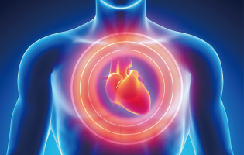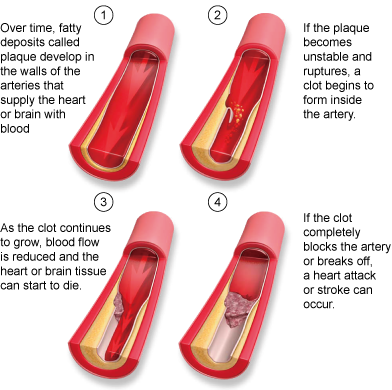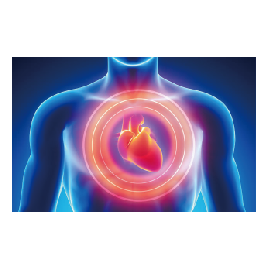Product
제품
-
Analytical Products
- Wyatt Technology
- Awareness Technology
- Eurofins l Abraxis (GSD)
- Aurora Biomed
- Canada NRC-CNRC
- Chrom Tech
- Eichrom Technologies
- EPROGEN
- Fluidic Analytics
- Globe Scientific
- GENERON
- Halo Labs
- Hygiena International
- KROMATON
- InProcess-LSP
- MTC Bio
- MZ-Analysentechnik
- Newomics Inc.
- Occhio Instruments
- Optimize Technologies
- Pickering Laboratories
- PolyLC
- Raykol Group
- RheoSense
- Rocker Scientific
- Santai Science
- SEDERE
- Spectra Analysis
- UCT
- Wealtec Corp
-
Bio & Medical Products
- Biolog
- Adooq Bioscience
- A&A Biotechnology
- Accegen Biotechnology
- Anatrace
- Array Bridge
- Biogenes GmbH
- BioQuochem
- BioServ UK
- Biomiga
- Biotech Support Group
- CinderBio
- Cell Technology
- Creative Biolabs
- Creative Diagnostics
- Creative Biostructure
- Creative Biomart
- Creative Enzymes
- EICOM
- Emulseo
- GLYcoDiag
- Helix Biotech
- InnoGenomics
- IsoSciences, LLC
- IUL Instruments
- Micropore Technologies
- Matrix Innovation
- PreciGenome
- PhylumTech
- ProFoldin
- Protein Ark
- Primer Design
- ProteoChem
- RareCyte
- RECIPE
- Silicycle Inc.
- Tymora Analytical
- UTAK
- YouSeq
- Z Biotech
- Cardiac Marker ELISA Kits
- 제품명: Cardiac Marker ELISA Kits
- 용도: Human Diseases
- 메이커: Creative Diagnostics
- 카달로그:
소개
Cardiac Marker ELISA Kits
Cardiac Disease Background

Cardiovascular disease is a class of diseases that involve the heart or blood vessels. it has remained the leading cause of death worldwide despite the tremendous progress made in medical and surgical treatment for this disease. Biochemical markers play a crucial role in accurate diagnosis of cardiac disease and, more importantly, for assessing risk and directing appropriate therapy that improves clinical outcome.
Creative diagnostics provides a wide range of Immunoassay test kits (ELISA) to diagnose different cardiac markers like, serum acute phase proteins (CRP proteins) and other Cardiac proteins.
The human heart is only the size of a fist, but it is the strongest muscle in the human body. The heart starts to beat in the uterus long before birth, usually by 21 to 28 days after conception. The average heart beats about 100 000 times daily or about two and a half billion times over a 70 year lifetime. With every heartbeat, the heart pumps blood around the body. It beats approximately 70 times a minute, although this rate can double during exercise or at times of extreme emotion. Blood is pumped out from the left chambers of the heart. It is transported through arteries of ever-decreasing size, finally reaching the capillaries in all the tissues, such as the skin and other body organs. Having delivered its oxygen and nutrients and having collected waste products, blood is brought back to the right chambers of the heart through a system of ever-enlarging veins. During the circulation through the liver, waste products are removed. This remarkable system is vulnerable to breakdown and assault from a variety of factors listed in box 1.
Box 1. Risk Factors
• Tobacco use, an unhealthy diet, and physical inactivity increase the risk of heart attacks and strokes.
• High blood pressure has no symptoms, but can cause a sudden stroke or heart attack.
• Diabetes increases the risk of heart attacks and stroke.
• Being overweight increases the risk of heart attacks and strokes.
• Low socioeconomic status increases the chances of exposure to risk factors and increases the vulnerability to develop CVD.

Cardiovascular diseases include:
• coronary heart disease (heart attacks),
• cerebrovascular disease (stroke),
• raised blood pressure (hypertension),
• peripheral artery disease,
• rheumatic heart disease,
• congenital heart disease,
• heart failure.
The major causes of cardiovascular disease are tobacco use, physical inactivity, and an unhealthy diet. Over 80% of cardiovascular disease deaths take place in low-and middle-income countries and occur almost equally in men and women.
Coronary heart disease
Disease of the blood vessels supplying the heart muscle. Major risk factors High blood pressure, high blood cholesterol, tobacco use, unhealthy diet, physical inactivity, diabetes, advancing age, inherited (genetic) disposition. Other risk factors Poverty, low educational status, poor mental health (depression), inflammation and blood clotting disorders.
Cerebrovascular disease (stroke)
Strokes are caused by disruption of the blood supply to the brain. This may result from either blockage (ischemic stroke) or rupture of a blood vessel (hemorrhagic stroke). Risk factors High blood pressure, atrial fibrillation (a heart rhythm disorder), high blood cholesterol, tobacco use, unhealthy diet, physical inactivity, diabetes, and advancing age.
Peripheral arterial disease
Disease of the arteries supplying the arms and legs. Risk factors as for coronary heart disease.
Rheumatic heart disease
Damage to the heart muscle and heart valves from rheumatic fever, caused by streptococcal bacteria.
Congenital heart disease
Malformations of heart structures existing at birth may be caused by genetic factors or by adverse exposures during gestation. Examples are holes in the heart, abnormal valves, and abnormal heart chambers. Risk factors Maternal alcohol use, medicines (for example thalidomide, warfarin) used by the expectant mother, maternal infections such as rubella, poor maternal nutrition (low intake of folate), close blood relationship between parents (consanguinity).
Other cardiovascular diseases
Tumors of the heart; vascular tumors of the brain; disorders of heart muscle (cardiomyopathy); heart valve diseases; disorders of the lining of the heart.

